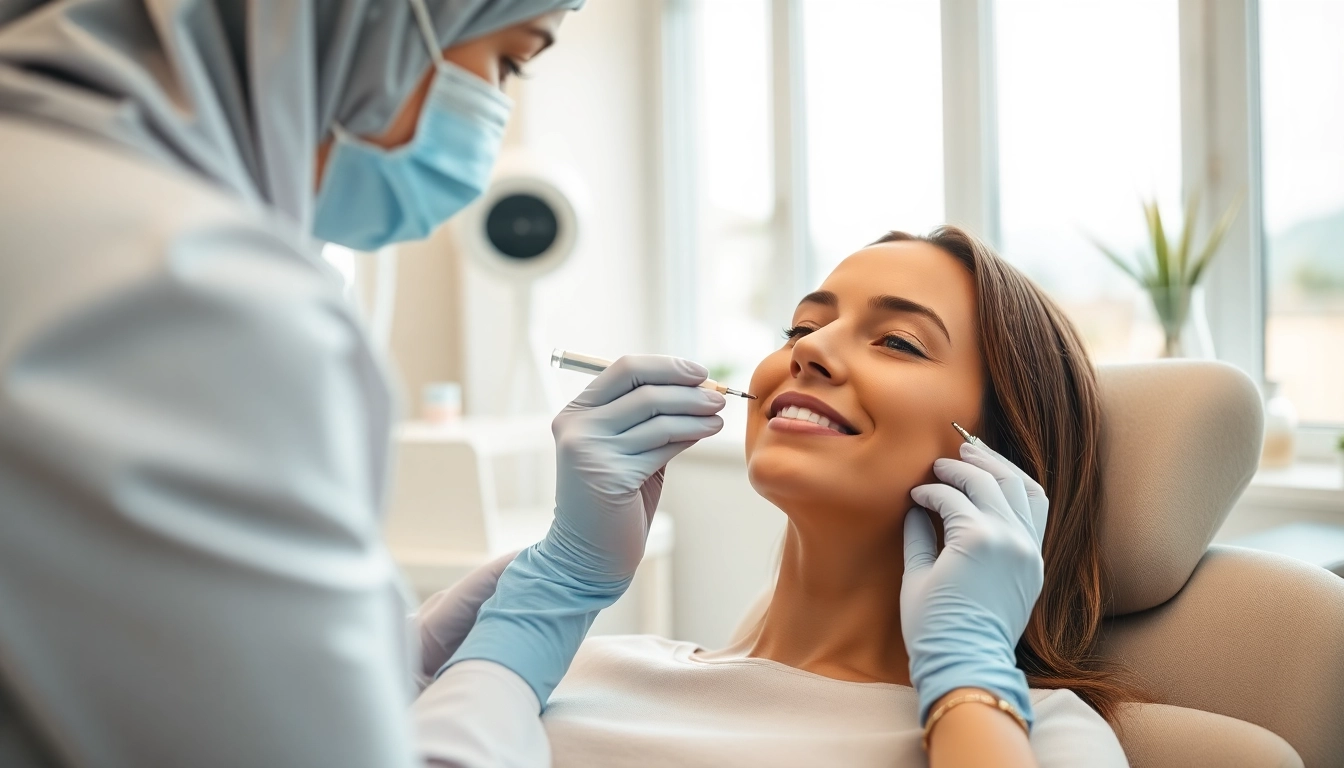Understanding Facial Balancing with Fillers
In the realm of aesthetics, facial balancing has emerged as a transformative technique that enhances one’s natural beauty. This procedure utilizes dermal fillers to create a harmonious balance among facial features, addressing asymmetries and guiding the face towards a more sculpted appearance. Many individuals seeking aesthetic improvement are increasingly turning towards facial balancing with fillers as a non-invasive solution for enhancement. In this comprehensive guide, we will dive into the intricacies of facial balancing, its process, benefits, common treatment areas, and key considerations to ensure an optimal experience.
What is Facial Balancing?
Facial balancing is a technique that aims to harmonize facial features through the strategic application of dermal fillers. Unlike traditional approaches that may target specific areas in isolation, facial balancing considers the entire face as a cohesive unit. This means that if one area is augmented, adjustments may be made to other features to maintain symmetry and proportion. The ultimate goal is to enhance the natural contours of the face while preserving the unique characteristics that define individuality.
The Process of Facial Balancing
The journey of facial balancing begins with a thorough consultation with a qualified practitioner who specializes in aesthetics. During this session, the practitioner assesses your facial structure, discusses your goals, and formulates a personalized treatment plan. The actual process involves the careful injection of dermal fillers into designated areas. These fillers are often made of substances like hyaluronic acid, which not only add volume but also improve skin texture.
Once strategic points are identified—such as the cheeks, lips, and jawline—the practitioner injects small amounts of filler using a fine needle or cannula, which minimizes discomfort and bruising. Post-treatment, patients typically notice an immediate improvement in facial symmetry and balance.
Key Benefits of Fillers
Choosing to undergo facial balancing with fillers comes with a myriad of benefits, some of which include:
- Immediate Results: One of the most attractive aspects of dermal fillers is the instant gratification they provide. Patients can witness significant changes right after the procedure.
- Non-invasive Approach: Unlike surgical techniques, fillers are generally quick outpatient procedures with minimal downtime.
- Customizable Treatments: Fillers can be tailored to each individual’s facial structure, allowing for highly personalized enhancements.
- Improved Confidence: Many patients report feeling more confident and satisfied with their appearance post-treatment.
Common Areas for Facial Balancing
Cheeks: Enhancing Volume and Contour
Full, contoured cheeks not only lend a youthful appearance but also provide definition to the face. Cheek fillers can restore loss of volume due to aging or enhance existing cheekbones. By injecting fillers into the upper cheek area, practitioners can elevate the contour, creating a lifting effect that often diminishes the appearance of sagging skin. This treatment can also provide a more pronounced jawline and improve overall facial symmetry.
Lips: Achieving Symmetry and Volume
Lip fillers are among the most popular applications of facial balancing. Many individuals wish to achieve fuller, more symmetrical lips that align harmoniously with their facial proportions. Through the careful application of dermal fillers, practitioners can enhance the lip volume or emphasize the cupid’s bow, creating a more aesthetically pleasing smile. Additionally, lip fillers can improve definition, helping to balance the overall facial features.
Jawline: Defining Features for a Stronger Profile
A defined jawline can significantly enhance one’s profile, contributing to a more assertive and youthful appearance. Jawline fillers can provide subtle contouring, enhancing the patient’s natural bone structure and addressing any sagging skin around the area. This treatment not only defines the jawline but also creates a seamless transition between the face and neck, augmenting the overall balance of features.
Choosing the Right Filler
Types of Fillers: Hyaluronic Acid vs. Other Options
When considering facial balancing, not all fillers are created equal. The most commonly used fillers are based on hyaluronic acid, a naturally occurring substance in the body. This type of filler is favored due to its ability to attract water, providing hydration and plumpness. Other filler options, such as collagen-stimulating fillers or calcium hydroxylapatite fillers, may also be employed, each offering different properties and benefits. It is essential to discuss the various types of fillers available with your practitioner to ensure the chosen product aligns with your aesthetic goals.
Consultation and Personalization
A consultation is integral in the facial balancing process. During this encounter, open communication is key. Patients should feel empowered to express their concerns and desired outcomes. Practitioners utilize this discussion to perform facial assessments, considering dimensions such as width, height, and projection of various features. An individualized treatment strategy is then crafted, taking into account unique facial structures and personal preferences, ensuring that the resulting balance is tailored and pleasing to the eye.
Understanding Longevity and Maintenance
Understanding how long the results of fillers last is crucial for potential patients. The longevity of filler results can vary based on the type of filler, area of injection, and individual metabolic factors. Typically, hyaluronic acid fillers can last anywhere from six to twelve months, while other fillers may provide longer-lasting results. To maintain the desired effects, regular touch-ups are recommended. A strategic maintenance plan can help individuals achieve ongoing facial balance while adapting to naturally occurring changes in their features.
What to Expect During Your Treatment
Pre-Treatment Consultation
Before undergoing facial balancing with fillers, a comprehensive pre-treatment consultation is critical. During the session, practitioners will gather medical history, evaluate the treatment area, and discuss potential risks and benefits. Patients should feel encouraged to ask questions to ensure full understanding and comfort with the proposed treatment.
The Treatment Experience
The treatment itself is typically straightforward and quick, often lasting between 30 to 60 minutes. Most practitioners begin by applying a topical anesthetic to minimize discomfort. Depending on the chosen filler, the practitioner may use a needle or a cannula to administer the product carefully. The use of a cannula can provide a gentler technique, reducing the risk of bruising and swelling.
Post-Treatment Care and Advice
Post-treatment care is essential for ensuring optimal results and minimizing adverse effects. Following the procedure, patients are typically advised to avoid strenuous exercise, excessive sun exposure, and alcohol for the first 24 hours. It’s also essential to avoid touching or massaging the treated areas to allow for proper healing and placement of the fillers. Practitioners often provide personalized aftercare instructions tailored to individual needs.
Enhancing Results with Aftercare
Best Practices for Aftercare
Aftercare plays a vital role in maximizing the effectiveness and longevity of facial fillers. Key practices include staying hydrated, avoiding blood-thinning medications, and not consuming alcohol for at least 24 hours post-treatment. Icing the treated areas can alleviate swelling, while sleeping on one’s back can help maintain the shape of the treated areas.
Avoiding Common Mistakes
Many individuals may inadvertently jeopardize their results by engaging in common post-treatment mistakes. For example, excessive manipulation of the treated areas can lead to uneven distribution of filler. It’s also advisable to steer clear of treatments like facials or chemical peels until the fillers settle, as these can affect the placement and longevity of the results.
When to Seek Professional Advice
While the majority of filler treatments yield positive results, there are occasions when patients may need professional advice post-procedure. Signs of concern include excessive swelling, prolonged pain, or unusual discoloration. If any of these symptoms arise, it is vital to consult with the practitioner immediately to address any complications proactively.



